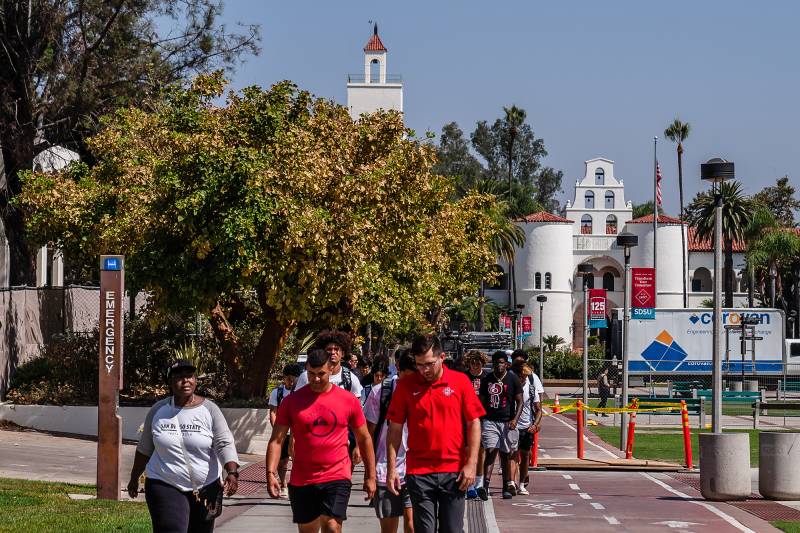The fiscal outlook gets modestly rosier later for the two systems, which combined run 33 universities that enroll around 750,000 students.
Each system would receive a modest bump of 2.05% in 2025-26 — a far cry from the 10% the governor projected in his January budget proposal. That 10% itself was a compromise. Each system was supposed to see a 5% bump in 2024-25 and the same in 2025-26. But in January, Newsom called for no bump in year one and to double-up in year two as a way to manage the state deficit.
That 10% for the two systems would have meant $1 billion combined in 2025-26, according to the Legislative Analyst’s Office. A mere 2% increase would total roughly $200 million.
The analyst’s office basically presaged the change of fortune for the universities. When Newsom unveiled his compact plan in 2022, a promise of increased spending in exchange for improvements in student academics, the office wrote: “We caution the Legislature against putting too much stake in the Governor’s outyear commitments to the universities.” Previous governors have rarely “been able to sustain their compacts over time,” the office noted.
One reason? “In some cases, changing economic and fiscal conditions in the state have led governors to suspend their compacts,” the office wrote then.
Whether lawmakers fight to restore these cuts is an open question. More money for campuses means they can pay to hire more faculty and offer more classes students need to graduate. The additional state support is also a particular lifeline for Cal State, which agreed to 5% raises for its roughly 60,000 unionized workers, including the nearly 30,000 faculty who went on strike late last year and early this year demanding wage and benefits gains.
But a dollar spent one place means it’s not spent elsewhere, and the governor is also proposing to swing his budgetary scythe at student financial aid. Under his May revision, the Middle Class Scholarship would shrink by more than $500 million to $100 million each of the next two years.
Around 300,000 students received that award this year, with average amounts between $2,000 and $3,000. If the governor’s plan becomes law, those amounts could shrink by 80%, on average.
One higher-education watchdog worries the cuts and limited growth will affect low-income students most.
“With this funding being cut, I think it’s going to require a real concerted effort over multiple years to make sure that those students are brought back into higher education and have the supports that they need over multiple years to actually make it to graduation,” said Joshua Hagen, director of policy and advocacy at the Campaign for College Opportunity, a nonprofit advocacy group.

